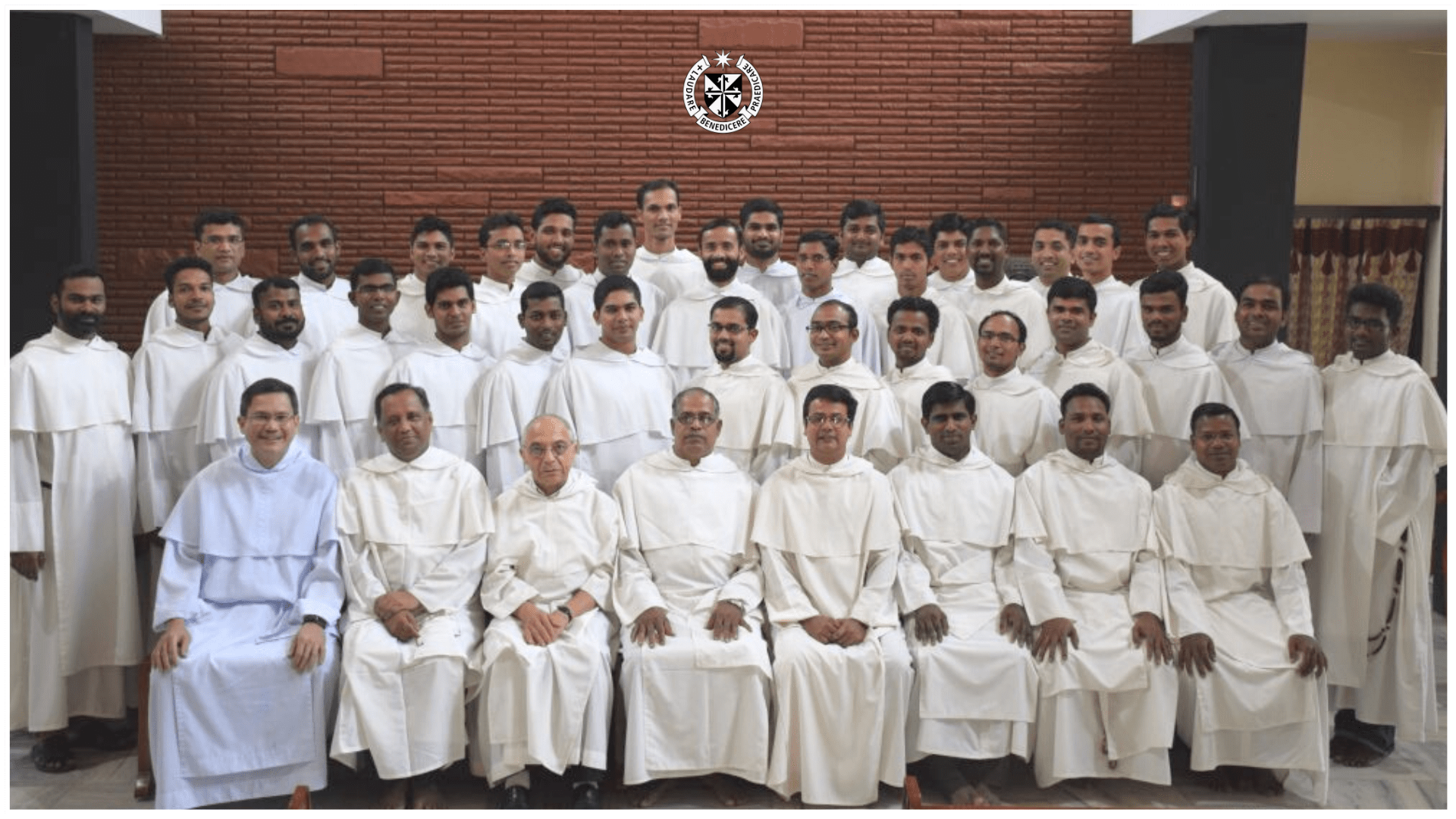"… you will know the Truth and the Truth will set you free" Jn. 8:32
The Order of Preachers, having Veritas (Truth) as the motto, is one of the oldest Preaching Order in the Church established in 1216 by St. Domini de Guzman. The 800 and odd year old order popularly called 'Dominicans' is devoted "for preaching and the salvation of souls."
A Dominican saying goes thus, “The Order for the Church, not the Church for the Order.” One night in a vision Pope Innocent III saw the Lateran Basilica about to fall when suddenly St. Dominic threw himself against the building to steady it. This vision persuaded the pontiff that St. Dominic's Order was pleasing to Heaven and would become one of the most powerful supporters of the Catholic Church.
Dominican Order from the Latin word Dominicanes meaning hound (canes) of God (Domini) makes faithfulness one's priority in serving Christ, His teachings and His Church. To this day, the Dominican Friars support the Catholic Church and uphold its doctrines with clear preaching and careful study. Committed to common life, prayer, preaching and study Dominicans have across the centuries been the Domini Canes/ Hounds of the Lord preaching the gospel and protecting the Church against heretical teachings. Through the emphasis on study we have gifted Mother Church intellectual titans like St. Thomas Aquinas, St. Albert the Great, St. Catherine of Siena, who are amongst the 33 Doctors of the Church. The Order has been blessed with fiery preachers like St. Peter of Verona, St. Vincent Ferrer, mystics like Bl. Henry Suso, Meister Eckhart, Bl.Catherine of Racconigi who received stigmata. The Dominicans are privileged to be the brethren of St. Martin De Porres, St. John Macias, and St. Rose of Lima etc.
During the first century of the Order's existence, the Dominican friars served as preachers, inquisitors, canon lawyers, theologians, and teachers at intellectual and spiritual centers such as Paris, Bologna, Orvietto, and Rome. Luminaries of this time include St. Raymond of Penyafort; a Spaniard who compiled an important collection of ecclesiastical canons, St. Thomas Aquinas; who was one of the most prominent theologians of the 13th century, Bl. Innocent V; the first Dominican to serve the Church as Pope, and Humbert of Romans, who served as Master of the Order, established the perduring form of the Dominican liturgy, and served as an advisor for the Second Council of Lyons.
It is said, “True devotion must come from true faith.” According to Tradition, St. Dominic received the Rosary from the Blessed Virgin Mary during his evangelization of the Albigensian heretics. Since then, the Dominicans have always been the most active promoters of the Rosary, with official recognition of the Holy See. The Dominican Bl. Alan de la Roche founded the Rosary Confraternity and received the 15 promises of the Rosary from Our Lady. Bl. Bartolo Longo, a 3rd Order Dominican, was called a “True apostle of the Rosary” by Pope St. John Paul II in his institution of the Luminous Mysteries.
There are presently around 5,800 friars living in 550 Dominican priories and houses throughout the world, 2,750 nuns living in 200 monasteries, 23,000 active sisters belonging to 150 congregations, and around 166,000 Dominican laity living out the Dominican charism in the midst of their daily lives. To this day, the Order of Preachers guards and illuminates the Church with the torch kindled by St. Dominic, the light of the Church.

History of Indian Dominicans is almost as old as the Order. In 1291 a spirited Dominican from the Roman Province named Nicholas of Pistoia reached India in the company of a Franciscan friar and preached the gospel in Mylapore, Tamil Nadu for over a year. However the first Dominican presence lay buried in Mylapore as Fr. Nicholas succumbed to an illness in 1292.
Jordanus (Jordan of Severac/Catala), an Iberian Dominican friar, reached India around 1321 along with 4 Franciscans and preached the Gospel in parts of Maharashtra and Gujarat. He was appointed as the Bishop of the Diocese of Quilon, first Roman Catholic Diocese in the Indian subcontinent. Jordanus attained martyrdom around 1330 to bring the curtain down on the first phase of Dominican activity in India.
The present Indian Dominican Province grew out of an invitation in 1959 by Archbishop Eugene D'Souza of Nagpur to the Irish Dominican Province to take charge of St. Charles seminary, Nagpur. The establishment of a house of formation in Nagpur and a novitiate in Pachmarhi, Madhya Pradesh in 1967 and rapid increase in the number of friars caused the establishment of Vice-Province of India on 8 December 1987. The seed that was planted in 1959 bloomed into the Province of India on 8 August 1997.
As sons and daughters of St. Dominic we are thankful to the Most Blessed Trinity for giving us more than 70 canonized saints and 200 blesseds, including three Popes, two novices and a master Renaissance artist.